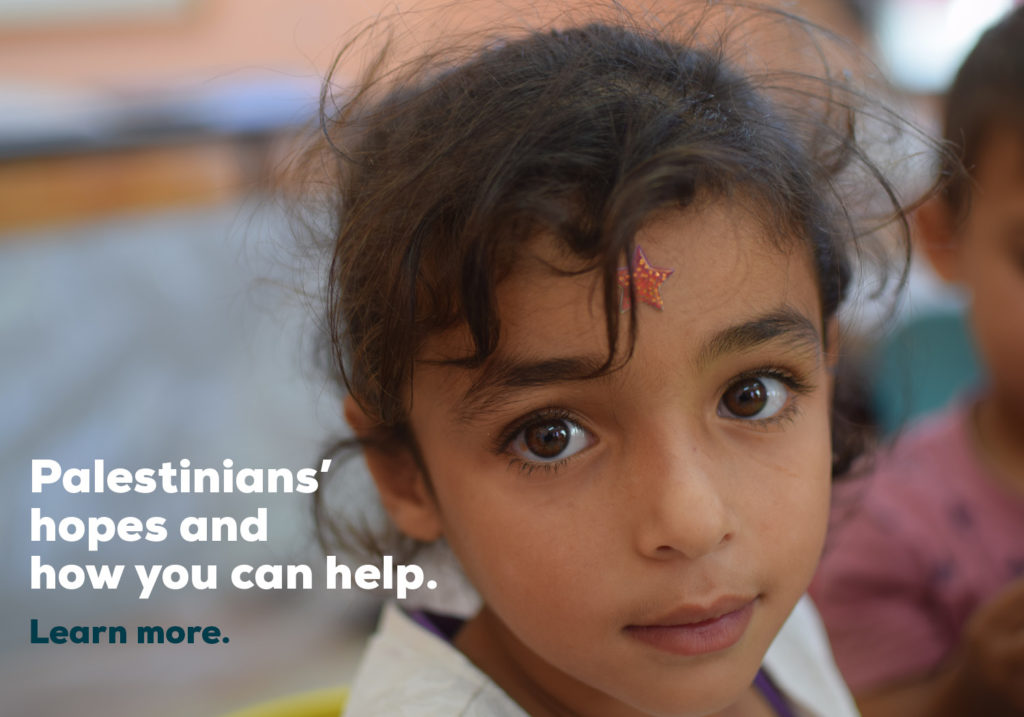A Glimpse at Everyday Life in Palestine
Posted in: Society & culture
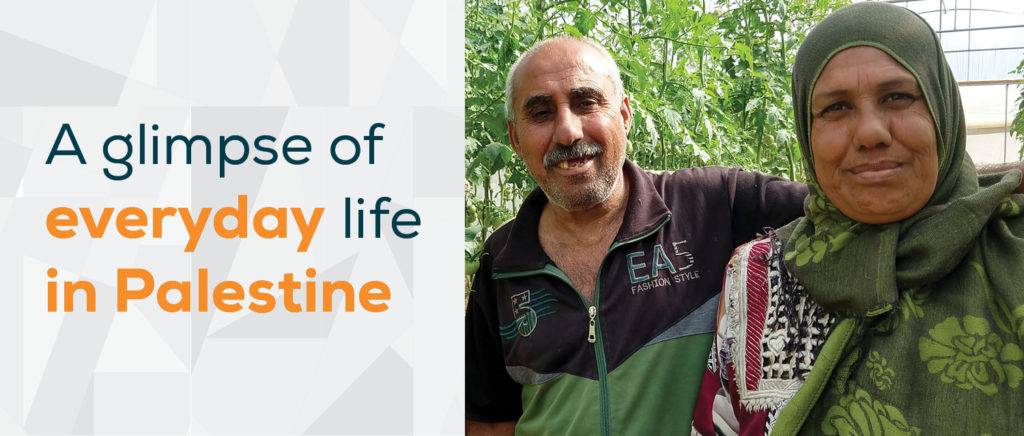

What is life like in Palestine?
There are too many occasions when violence and chaos threaten a dangerous disruption of everyday life in Palestine, even for those who are not directly involved. This is particularly true in one of the many Palestinian refugee camps where as many as one-third of all Palestinians live.
For other Palestinians, the daily struggle is getting an adequate education. Palestinian children often must walk several kilometers to get to a school and occasionally, as in the West Bank, this means walking by settlements that aren’t necessarily friendly to them.
Too often, daily life in Palestine involves navigating your way throulgh an endless series of checkpoints and regulations that inhibit travel and restrict access to medical aid or visiting families in other parts of Palestine.
Yet despite all these restrictions, Palestinians deal with the seemingly endless struggles and continue living meaningful lives. Palestinians work hard to overcome these difficulties to find a better future for themselves and their families.
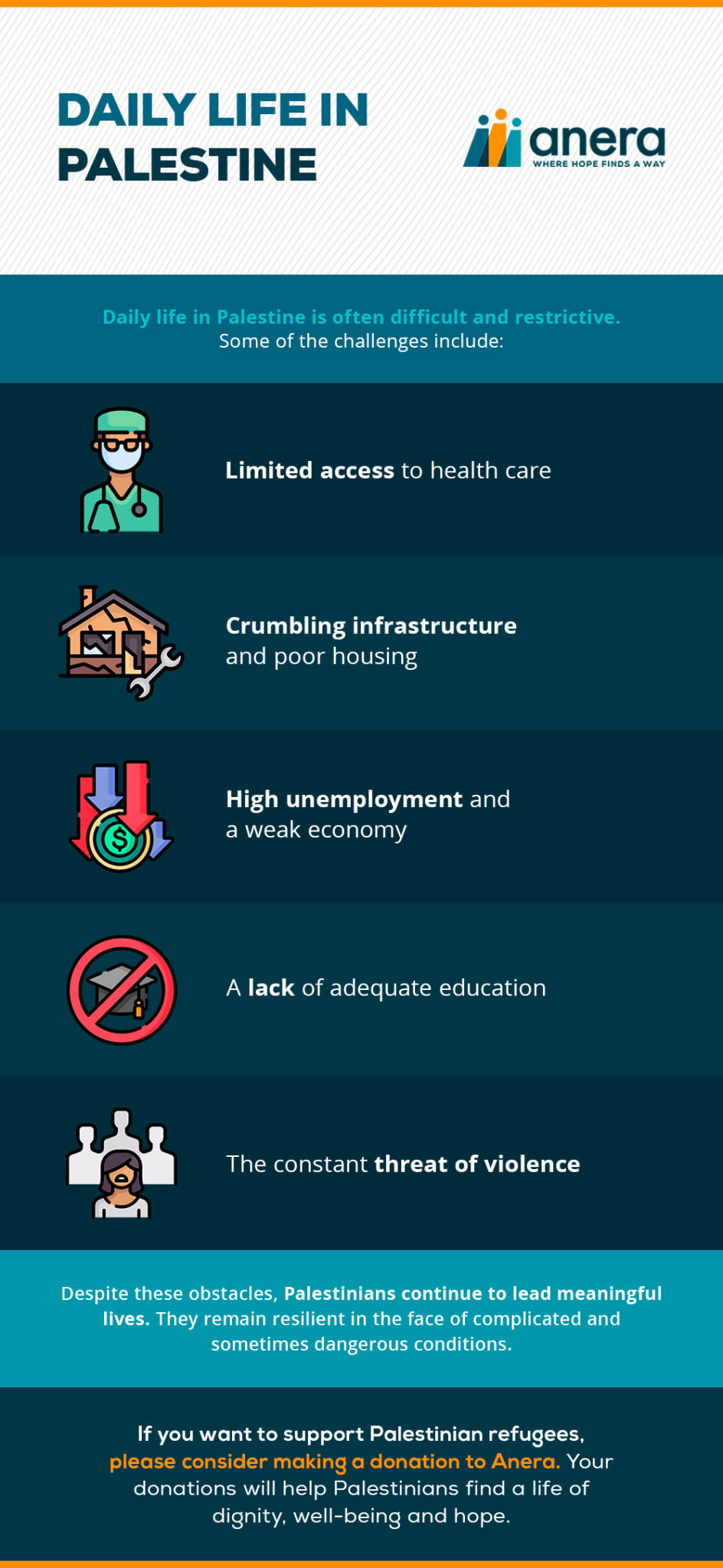

Restricted Movement and Access to Healthcare
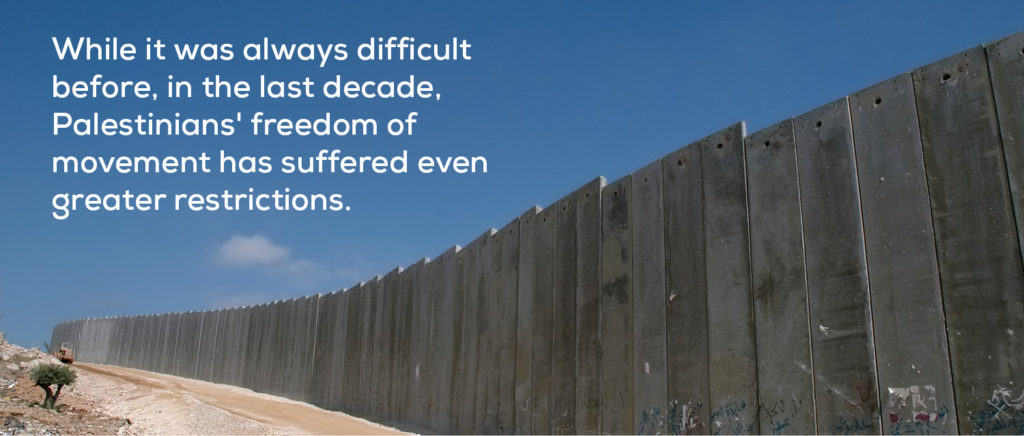

While it was always difficult before, in the last decade, Palestinian’s freedom of movement has suffered even greater restrictions. For instance, every day, more than 80,000 Palestinians cross into Israel for work, education or medical reasons. Yet these attempts to cross can take hours and, in some cases, a day or two.
In 2013 in Gaza, Egypt placed new restrictions at the Rafah border crossing. They also started a crackdown on the many smuggling tunnels that existed beneath the Gaza-Egypt border.
Since late 2014, Egypt has only opened the border in exceptional circumstances. A report by the United Nations Office for the Coordination of Humanitarian Affairs (OCHA) stated that the Rafah crossing only opened 17 days as of April 2018. During this time, 23,000 Palestinians registered to cross the border but were still waiting for permission to do so.
Meanwhile, in the West Bank, B’Tselem, a leading Israeli peace organization, reports as of September 2019 that there are several dozen checkpoints in the West Bank (as well as many in Gaza). Palestinians must often line up at 3 or 4 a.m. to be able to pass through the checkpoints on time to make it to their jobs in Israel or some other part of the West Bank.
The United Nations Conference on Trade and Development reported in September 2019 that there are over 700 physical obstacles in the West Bank alone that restrict the movement of Palestinians. Checkpoints are only one form of these obstacles — Palestinians also have to contend with gates, trenches, mounds and roadblocks.
Palestinians are often able only to cross through the checkpoints as pedestrians and leave their vehicles behind. If the crossing is delayed for any reason, the workers may miss their buses and be forced to take taxis to make it to their jobs on time.
These travel restrictions also have serious effects on healthcare for Palestinians. Palestinian patients, ambulances and medical personnel are often stopped from getting access to hospitals in Jerusalem. Although Israeli military will often try to help, Palestinian women have given birth at checkpoints, and some people have died while waiting to cross the checkpoint to seek healthcare.
Meanwhile, in Gaza, Egyptian border closures had a similar effect. Before Egypt effectively close its border, many Palestinians would cross to seek healthcare in the Sinai. Before 2014, the World Health Organization (WHO) calculated, about 4000 people traveled every month to Egypt for healthcare. This is no longer possible.
Crumbling Infrastructure and Poor Housing Conditions
Crumbling infrastructure and poor housing conditions have been a particular problem since the 2014 conflict in Gaza. Since that time, many schools, health centers, government offices and even private homes have remained uninhabitable or dangerous to work or live in.
The problems with infrastructure affect Palestinians living in Gaza in many ways.
For instance, crumbling infrastructure puts over half a million Palestinians who live in low-lying areas of Gaza in danger of being flooded every winter.
Poor housing conditions result from an inability to access building materials for maintenance and repair work.
As bad as things are in Gaza and parts of the West Bank, they can be even worse in Palestinian refugee camps. These camps are consistently overcrowded. They often lack even basic infrastructure like sanitation or roads. Electricity is only available on an inconsistent basis, and during times of crisis, camps will go without power for months.
Since agreements between the host countries and UNRWA determine the borders of these camps, refugees can only build structures within these boundaries. As the number of refugees increases, either through a growing population or via new arrivals, the camps become even more crowded.
In some cases, the Palestinians can do very little to remedy the situation. For instance, in Lebanon, refugees cannot repair or build property even within the boundaries of the camps. If homes or schools or healthcare facilities are damaged, it is difficult, if not impossible, to fix them. Trying to do so can bring heavy fines.
Even when construction is allowed, there can still be problems communicating approvals to the proper local authorities. In one case, when Palestinian refugees received permission to repair a local school, Lebanese police showed up to make them stop.
Living in these overcrowded conditions in refugee camps has serious health effects on refugees. According to a 2012 study by the British medical journal The Lancet:
- Over 30% of those surveyed suffered from chronic illness.
- Almost one-quarter of those surveyed suffered an acute illness in the previous six months.
- More than 50% were psychologically distressed.
The survey also found that residents of the refugee camps suffering from poor mental health were often poor, more likely to live in very crowded homes with inadequate infrastructure and were more likely to suffer from chronic or acute illnesses.
High Unemployment Rates and a Weak Economy
Early in September 2019, the United Nations Conference on Trade and Development (UNCTAD) issued a report warning of the imminent collapse of the Palestinian economy. The report cited three main causes for the dire situation: a reduction in American financial support, Israel’s withholding of tax revenue collected for the Palestinian Authority and a drop in foreign aid and grants from outside organizations and countries.
The World Bank reported in April 2019 that the Palestinian economy experienced no growth in the previous year. Another factor that contributes to the weak economy in Palestine is the desperate unemployment rate. The World Bank also reported that the 2018 unemployment rate in Palestine was 31%, one of the highest rates of unemployment in the world.
The problem was significantly worse in Gaza. Over 50% of the labor force in Gaza remains unemployed, while the poverty rate is at 53%. Overall per capita income, which has never been high, fell 1.7% in 2018 in the West Bank and Gaza.
There is also a significant gender difference in the unemployment rate in Palestine. According to figures from the Palestinian Central Bureau of Statistics, the unemployment rate for Palestinian women was 49% while it was only 18% for men. For those Palestinians lucky enough to find employment, the average daily wage in 2018 in the West Bank was 106.4 NIS (about $30) while in the Gaza Strip, it was 62.1 NIS (about $18).
With an average family size of five in Palestine, that’s not a lot of money to feed hungry mouths.
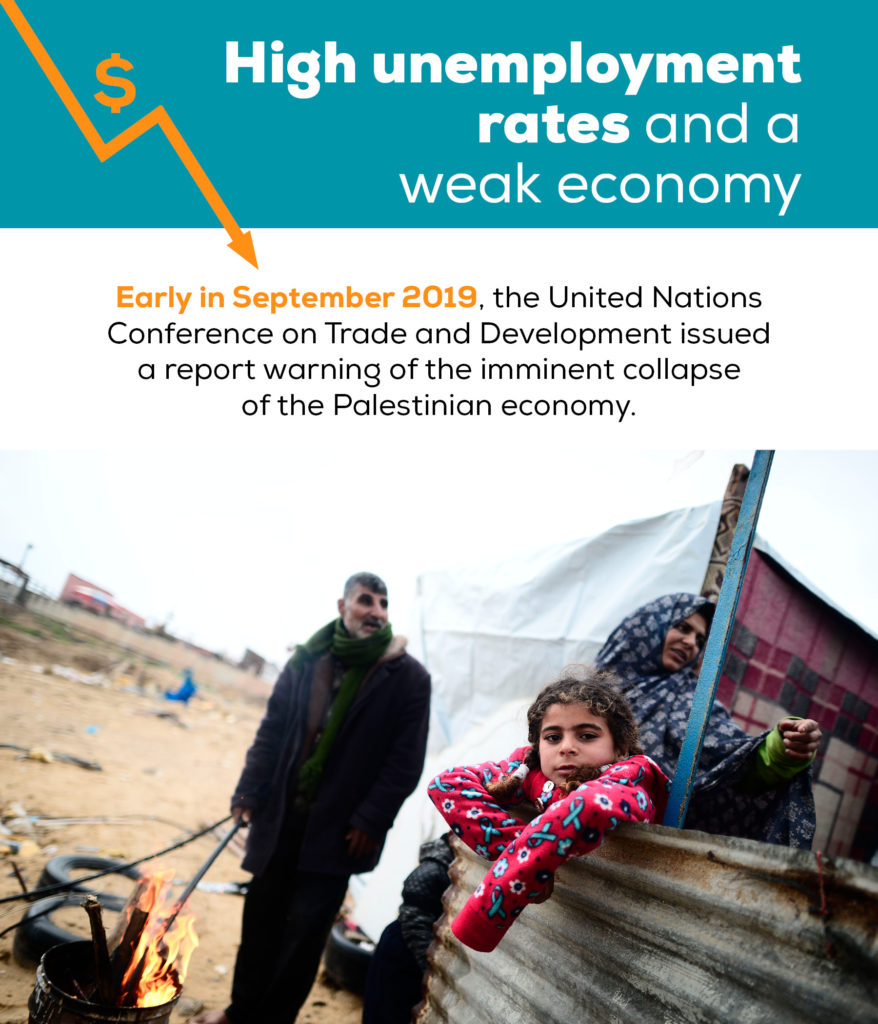

A Lack of Adequate Education
While 97 percent of Palestinians are literate, access to education is under constant pressure.
In Gaza, more than 90 percent of the schools run what is known as “double shifts.” One set of students comes in the morning with another set in the afternoon. This results in very large class sizes. The United Nations reported that in the 2018/2019 school year, the average class size in United Nations Relief and Works Agency (UNRWA) schools in the Gaza Strip was more than 40 pupils.
Meanwhile, a report from the United Nations Fund for Population Activities (UNFPA) reports that there will be almost 1.2 million more students in Gaza by 2030. This will require 900 more schools and an additional 23,000 teachers.
Students in the West Bank often face transportation difficulties that require moving through multiple checkpoints and walking long distances. Troubles can occur when these students need to pass Israeli settlements, which often requires them to be escorted by the Israeli military to avoid confrontation.
In January 2019, the United Nations warned that Palestinian children were being deeply affected by interference in and around their schools in the West Bank.
Food Insecurity
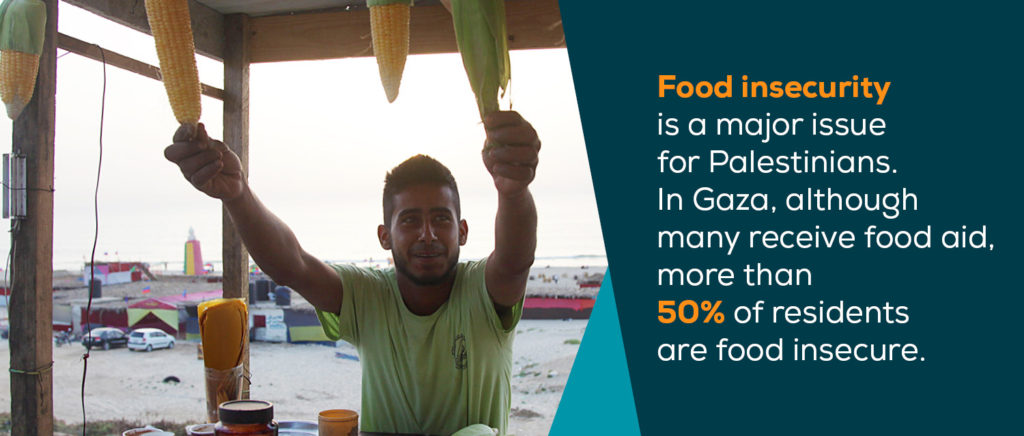

Food insecurity is a major issue for Palestinians. In Gaza, although many receive food aid, more than 50% of the people are food insecure. In the West Bank, more than 20% of the population is in the same situation.
There are many reasons for this. Food prices are high. The amount of aid to Gaza and the West Bank has been restricted. Recent cutbacks in funds from the United States, as well as funds and grants from other countries and outside organizations, means that aid organizations working in Palestine have fewer dollars to buy food for those who need it.
Another significant problem is Palestinians’ access to usable farmland. As a result of the recent conflicts, the Israeli government has required a “safety barrier” of up to a kilometer on the borders of the West Bank, Gaza and Israel. The result is that Palestinian farmers are restricted from using farmable land.
This is especially true in Gaza, where the barrier covers some of the region’s best farmland. As a result, Gaza’s agricultural sector dropped from more than 10 percent of GDP in the mid-90s to less than five percent in 2018.
Meanwhile, fishing has been greatly reduced. A fishing limit imposed by Israel in 2014 means that Palestinians living in Gaza can only fish about 6 miles from shore. Unfortunately, most of the best fishing areas lie farther out in the Mediterranean Sea.
In the not-too-distant past, Palestinian fishermen were able to earn more than $500 a day fishing. Now it is an extremely good day if they make $30. The United Nations has argued that if the limits were lifted, fishing would provide a cheap source of food for people in the region as well as many jobs.
In a positive development, in January 2019, Israel increased the limit to 12 nautical miles in some middle sections of Gaza. However, restrictions remain at 6 nautical miles in the north and the south.
The Constant Threat of Violence
One of the more immediate dangers to Palestinians is the constant threat of violence. Conflict has been an ongoing part of everyday life in Gaza and the West Bank for many years. These ongoing conflicts are one of the reasons that there are so many Palestinian refugees in camps in Lebanon, Syria and Jordan.
Violence can arise in many ways. Misunderstandings at checkpoints can sometimes lead to violent confrontations. Accidentally coming too close to Israeli settlements in the West Bank can lead to misunderstandings on both sides. Palestinians seen as being too friendly to one side or the other can be targeted for attack.
While many Palestinians deeply feel the injustice of their situation, they also understand that the potential for violent retribution is always high and that they need to be very careful.
Palestinians’ Hope and How Anera Helps
As hard as life can become sometimes, Palestinians are an amazingly resilient people. The Palestine lifestyle is amazingly complex, diverse and sometimes contradictory, very much like the Palestinian people themselves. Their strength and courage are what make Palestine so alive.
Anera has worked since 1968 to help Palestinians whether they live in Gaza, the West Bank or refugee camps. Our workers come from the communities we serve. They understand what assistance refugees need and the things that will help them create a better life and succeed in their goals. Your financial support for refugees is more important and crucial today than it has ever been in the past.
Anera assists in rebuilding important infrastructure in Gaza, training Palestinians in the West Bank to use new agricultural techniques and delivering healthcare wherever it’s needed in these areas.
If you want to help Palestinian refugees throughout the region, please consider making a donation to Anera. Your donations will help Palestinians in Gaza, the West Bank and refugee camps find a life of dignity, well-being and hope.
